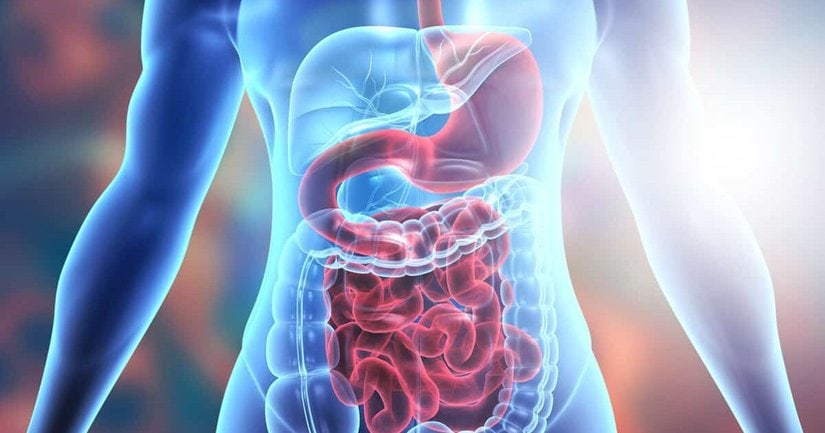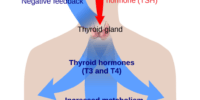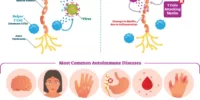What Is The Digestive System? A Journey Through The Gastrointestinal Tract

The digestive system is a complex network of organs and tissues that work together to break down food and absorb nutrients into the body. This intricate process is crucial for maintaining our overall health and wellbeing. Understanding the digestive system and its functions can help us make informed choices about our diet and lifestyle.
In this article, we will take a journey through the gastrointestinal tract, from the mouth to the large intestine, exploring each organ’s role in the digestion process.
We will examine the functions of the liver and pancreas, which play critical roles in the digestive system, and discuss the system’s overall importance for maintaining a healthy body.
By the end of this article, readers will have a comprehensive understanding of the digestive system and its functions, allowing them to make informed choices about their diet and lifestyle.
Key Takeaways
- The digestive system plays a crucial role in overall health and well-being, and the gut microbiome is important for immune system function.
- The gastrointestinal tract includes the mouth, esophagus, stomach, small intestine, and large intestine, each with a specific function in digestion and absorption.
- The liver produces bile for digestion and absorption of dietary fats, filters blood from the digestive tract, and performs other important functions such as storing glycogen and regulating blood sugar levels.
- The pancreas produces enzymes that aid in the breakdown of carbohydrates, proteins, and fats, and also regulates blood sugar levels by producing insulin and glucagon. Dysfunction of the pancreas can lead to various medical conditions.
The Mouth: Where Digestion Begins
The oral cavity serves as the initial site of digestion, where the mechanical and enzymatic breakdown of food begins through the actions of teeth, saliva, and enzymes.
The process of digestion starts with the mechanical breakdown of food through chewing, which is facilitated by the teeth. The teeth, located in the oral cavity, are used to break down food into smaller particles, which increases the surface area available for enzymes to act upon.
This mechanical breakdown is aided by the action of saliva, which moistens the food and helps to form a bolus that can be easily swallowed.
Saliva also contains enzymes, such as amylase, which begins the process of chemical digestion in the oral cavity. Amylase breaks down complex carbohydrates into smaller molecules such as maltose.
The breakdown of carbohydrates in the oral cavity is a crucial step in the process of digestion, as it allows for the efficient absorption of nutrients in the later stages of the process.
In summary, the oral cavity serves as the initial site of digestion, where the mechanical and enzymatic breakdown of food begins through the actions of teeth, saliva, and enzymes.
The Esophagus: Transporting Food to the Stomach
As food travels down the esophagus, it is propelled by rhythmic contractions known as peristalsis. These contractions, which are involuntary and occur in a wave-like motion, help to push food from the mouth down to the stomach.
The esophagus is a muscular tube that connects the pharynx (the part of the throat behind the mouth and nasal cavity) to the stomach. It is approximately 25 centimeters long and is lined with smooth muscle tissue that contracts to push food along its length.
The esophagus is a vital component of the digestive process as it transports food from the mouth to the stomach. It also plays an important role in preventing food from entering the respiratory system.
At the bottom of the esophagus, there is a circular muscle called the lower esophageal sphincter (LES) that opens to allow food to enter the stomach and then closes to prevent the contents of the stomach from coming back up into the esophagus. Dysfunction of the LES can result in gastroesophageal reflux disease (GERD), a condition in which stomach acid backs up into the esophagus, causing heartburn and other symptoms.
The Stomach: Breaking Down Food with Acid and Enzymes
Acid and enzymes work together in the stomach to break down food into smaller particles.
The stomach is a muscular sac-like organ that receives food from the esophagus. Upon arrival, the stomach mixes and churns the food with stomach acid and enzymes to create a thick liquid called chyme.
The stomach has three primary functions: to store food, to mix and churn food with digestive juices, and to release chyme into the small intestine for further digestion.
The stomach produces approximately 2 to 3 liters of gastric juice per day, which contains a combination of hydrochloric acid, pepsin, and mucus.
The hydrochloric acid helps to lower the pH of the stomach, making it acidic enough to kill any harmful bacteria that may be present in the food.
Pepsin is a digestive enzyme that breaks down protein into smaller peptides and amino acids.
Mucus helps to protect the stomach lining from the corrosive effects of the acid and digestive enzymes.
Together, these components work to break down food into smaller particles that can be further digested and absorbed in the small intestine.
The Small Intestine: Absorbing Nutrients into the Body
One crucial component of the digestive process occurs in the small intestine, where nutrients are absorbed into the body. The small intestine is a long, narrow tube that measures about 6 meters in length and is divided into three regions: the duodenum, the jejunum, and the ileum. These regions have different structures and functions that aid in the absorption of nutrients.
The duodenum is the first region of the small intestine, where bile from the liver and enzymes from the pancreas are secreted to break down proteins, fats, and carbohydrates. The jejunum is the middle region, where most of the nutrient absorption takes place. It has a large surface area due to the presence of finger-like projections called villi, which increase the surface area for absorption. The ileum is the last region, where some nutrient absorption occurs, but it mainly absorbs vitamin B12 and bile salts. Overall, the small intestine plays a crucial role in the absorption of nutrients and the maintenance of a healthy body.
| Region | Length | Function |
|---|---|---|
| Duodenum | 25 cm | Receives digestive enzymes and bile from the pancreas and liver, respectively. It is responsible for the breakdown of proteins, fats, and carbohydrates. |
| Jejunum | 2.5 m | It has a large surface area due to the presence of villi, which increase the absorption of nutrients like glucose, amino acids, and fatty acids. |
| Ileum | 3.5 m | It absorbs vitamin B12 and bile salts. The remaining nutrients are absorbed, but to a lesser extent than in the jejunum. |
The small intestine is a complex organ that plays a crucial role in the digestion and absorption of nutrients. Its three regions have different structures and functions that work together to ensure that essential nutrients are absorbed into the body. The presence of villi in the jejunum greatly increases the absorption of nutrients like glucose, amino acids, and fatty acids. The ileum completes the process by absorbing vitamin B12 and bile salts, which are important for the maintenance of a healthy body. Understanding the role of the small intestine is essential for a better understanding of the digestive process and its importance in maintaining overall health.
The Large Intestine: Eliminating Waste
The large intestine, also known as the colon, is responsible for the elimination of waste from the body. It is a muscular tube that measures approximately five feet in length and two and a half inches in diameter. The colon is divided into four sections: the ascending colon, the transverse colon, the descending colon, and the sigmoid colon.
Waste material from the small intestine enters the large intestine in the form of a liquid called chyme. As the chyme passes through the colon, water and electrolytes are absorbed, and the remaining waste material is formed into feces.
To emphasize the importance of the large intestine in eliminating waste from the body, it is essential to note the following points:
- The colon plays a crucial role in the body’s waste removal process. Without it, waste products would accumulate in the body and cause severe health problems such as constipation, bloating, and abdominal pain.
- The large intestine is home to billions of bacteria that are essential for maintaining a healthy digestive system. These bacteria help break down undigested food and produce vitamins such as vitamin K and B vitamins.
Therefore, taking care of the colon by eating a balanced diet and staying hydrated is crucial for overall health and well-being.
The Liver: Creating Bile for Digestion
The liver is an essential organ located in the upper right quadrant of the abdomen. It is responsible for producing bile, a crucial substance needed for the digestion and absorption of dietary fats in the small intestine.
Bile is a greenish-yellow fluid that is made up of water, bile salts, bilirubin, cholesterol, and other substances. The liver secretes bile continuously, and it is stored in the gallbladder until needed for digestion.
When food containing fat enters the small intestine, the gallbladder releases bile into the small intestine, where it emulsifies the fat, breaking it down into smaller droplets. This process increases the surface area of the fat, making it easier for digestive enzymes to break it down into fatty acids and glycerol, which can then be absorbed into the bloodstream.
In addition to its role in digestion, the liver performs many other essential functions in the body. It filters blood from the digestive tract, removing toxins and waste products before they can enter the bloodstream. It also stores glycogen, a form of glucose that the body can use for energy when needed.
The liver produces blood-clotting proteins and removes excess hormones from the bloodstream. It also helps regulate blood sugar levels and produces cholesterol, which is needed for the production of cell membranes and hormones.
Overall, the liver plays a vital role in maintaining the body’s metabolic balance and is essential for overall health and well-being.
The Pancreas: Producing Enzymes for Digestion
The pancreas, a glandular organ located behind the stomach, is responsible for producing enzymes that aid in the breakdown of carbohydrates, proteins, and fats. The enzymes produced by the pancreas are released into the small intestine, where they mix with the food and digestive juices to break down the nutrients into smaller molecules that can be absorbed by the body.
The enzymes produced by the pancreas include amylase, lipase, and protease. Amylase breaks down carbohydrates into simple sugars, lipase breaks down fats into fatty acids and glycerol, and protease breaks down proteins into amino acids.
The pancreas also plays a role in regulating blood sugar levels. It produces hormones, including insulin and glucagon, which help to regulate blood sugar levels. Insulin helps to lower blood sugar levels by allowing cells to take up glucose from the blood, while glucagon helps to raise blood sugar levels by stimulating the liver to release stored glucose.
Dysfunction of the pancreas can lead to a variety of medical conditions, including diabetes, pancreatitis, and pancreatic cancer.
The Journey’s End: Understanding the Role of the Digestive System in Our Overall Health
The pancreas plays a crucial role in the digestive system by producing enzymes that break down carbohydrates, proteins, and fats. These enzymes are released into the small intestine to aid in the absorption of nutrients. However, the digestive system is not solely responsible for breaking down food and absorbing nutrients. It also plays a significant role in our overall health.
The digestive system is a complex network of organs that work together to break down food and absorb nutrients, but it also plays a critical role in the immune system, endocrine system, and nervous system. For instance, the gut is home to trillions of microorganisms that make up the gut microbiome, which plays a crucial role in our immune system and overall health. The gut also produces hormones that regulate hunger and fullness, as well as neurotransmitters that affect our mood and behavior. Understanding the role of the digestive system in our overall health can help us make informed decisions about our diet and lifestyle choices.
| Organ | Function |
|---|---|
| Mouth | Chews and breaks down food with the help of saliva |
| Esophagus | Moves food from the mouth to the stomach through muscle contractions |
| Stomach | Mixes and churns food with stomach acid and enzymes |
| Small Intestine | Absorbs nutrients from food and sends them to the bloodstream |
| Large Intestine | Absorbs water and electrolytes from undigested food, forms and stores feces |
| Liver | Produces bile to aid in fat digestion |
| Pancreas | Produces enzymes to break down carbohydrates, proteins, and fats |
| Gallbladder | Stores and releases bile into the small intestine |
As we can see from this table, each organ in the digestive system has a specific function that contributes to the overall process of digestion and absorption of nutrients. However, it is important to remember that the digestive system is not just about breaking down food. It also plays a crucial role in our overall health and well-being. By understanding how the digestive system works, we can make informed decisions about our diet and lifestyle choices that can positively impact our health.
Conclusion
In conclusion, the digestive system is a complex network of organs that work together to break down food and absorb nutrients into the body.
The journey begins in the mouth, where food is chewed and mixed with saliva to begin the process of digestion.
From there, it travels through the esophagus to the stomach, where it is broken down with acid and enzymes.
The small intestine is where the majority of nutrient absorption takes place, while the large intestine eliminates waste.
The liver and pancreas also play important roles in digestion, producing bile and enzymes respectively.
Understanding the function of each organ in the digestive system is crucial to maintaining overall health.
A balanced diet, regular exercise, and proper hydration can all contribute to optimal digestive function.









